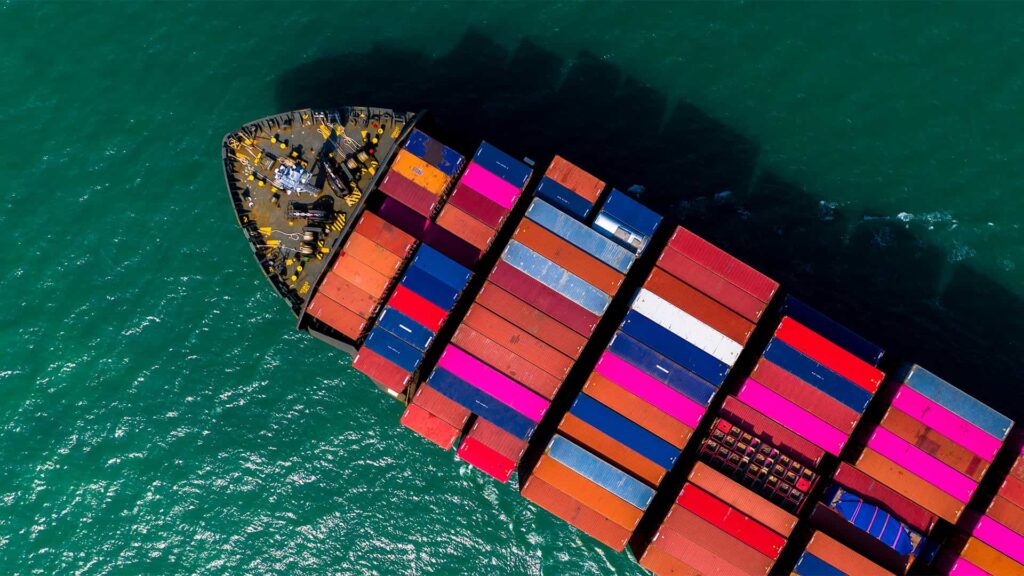Predictably unpredictable, April 2015
This Article first appeared in the April/May 2015 edition of Bunkerspot and is re-produced with permission. http://www.bunkerspot.com.
For the shipping industry (and within this term we also refer to the many service providers such as ourselves and the readers of Bunkerspot) the last five years of that decade were not just nice, but nothing short of phenomenal, propelling unprecedented growth and rates, with owners in the bulk trades benefiting from the upsurge in the demands of the growing industrial and urban economy of China.
In such conditions the financing of ships from traditional bank lending was readily available. With the contraction of liquidity and consequent availability of credit the world of ship finance has had challenges.
These have been as a result of both market conditions – the global depression leading to a drop in the demand for seaborne goods and materials, exacerbated by an oversupply of second-hand and newly built vessels – and also changes in the regulation of banks and pressures to restore and reallocate valuable capital.
Traditional ship finance, with its requirement for long term capital, has been the casualty of these pressures and to a substantial extent the funding gap has been filled by new players, including private equity, seeking to enter the shipping market and predict the shipping cycles.
As the first quarter of 2015 draws to a close, the shipping market remains challenging at best. The trends of ship finance, private equity and alternative sources of finance continue to ebb and flow. Even after their comparatively recent forays into the industry it is reported that many such investors are holding substantial unrealized losses2.
After peaking at over US$7 billion in 2013, private equity investments in shipping (including investments in tankers, bulk carriers and distressed debt), reportedly fell by half in 20143. The non-listed nature of private equity investors combined with private ship owning groups and managers often means that most ventures in this asset class are not typically reported publicly. However, notable investments and reported transactions saw match-ups back in 2010 between Oaktree Capital/Beluga Shipping, Alterna Capital/Western Bulk Shipping and Apollo Global/Principal Maritime. However, it was 2013 which certainly saw the biggest flurry, with match-ups between Blackstone Group/Eletson, Oaktree Capital/Navig8 Group, Davidson Kempner/Lloyds’s Banking Group and Oaktree/Commerzbank to name a few (the latter two examples falling within the secondary debt markets)4.
The shipping industry is often seen as a space where normal rules do not apply and financing of the industry appears to be no exception. In recent years, the shipping market’s volatility has meant that new investors have been in need of a crystal ball rather than complex financial models. The 2008 crash was soon followed by a huge spending spree on tankers, bulk carriers and containerships between 2010 and 2013. Of course, many expected increased carrier capacity to be balanced by renewed cargo demand, particularly in the dry bulk sector, facilitated by continued growth in China and other BRIC countries. However, strong projections often failed to materialise whilst economic uncertainty and Eurozone issues and the potential for a ‘Grexit’ as well as continuing political unrest in a number of countries throughout the world still hinder the most positive signs of growth.
The investment of billions of dollars into global shipping took place after what was seen to be a depressed shipping market and an ostensible low for shipping cycles. However, the decrease in Chinese demand coupled with vessel saturation has not allowed the cyclical recovery that many were counting on. With the Baltic dry index plummeting to its lowest in decades, accompanied by falling asset values for bulk carriers and free falling oil prices, the uncertainty in the market is far from over. As a result, many investors have not yet seen the short term cyclical gains which many had anticipated, although the staggered flow of investment means that many investments still have some time before exit discussions are due to commence.
In the meantime, some of the larger private equity names appeared to retreat, with signs of a return to traditional means of bank finance. Nevertheless, most commentators agree that private equity still has a valuable role to play, with experts predicting increased investment activity over the next two years – albeit in more diversified and specialist sectors.
Some of the difficulties faced by potential marriages between private equity and shipping companies can also be attributed to a perceived clash of values between the traditional, family-run shipping companies and the slickly managed, US-style investment houses.
Both in terms of the financial, commercial, technical and legal due diligence which commences during the ‘courting stage’ as well as the important strategic decisions made during the marriage, the differences in business culture can create significant issues. Writing in the Financial Times, John Dizard refers to the contrasts between the shipping industry, with its traditional family values and penchant for hereditary advantage, and a private equity industry which favours efficiency, transparency and a system of meritocracy. Dizard describes this as the “classic agency problem” in which a number of shipping principals were arguably more concerned with pocketing their management fees than sharing in the longer term financial gains5.
Notwithstanding the hardships of any marriage, significant private equity investments have materialised and continue to emerge, but how has such large scale investment impacted the veterans of traditional bank finance in the shipping industry?
There are indications of a return to traditional bank lending – a trend which has been most apparent in that microcosm of the industry: Greece. Indeed it seems a number of international banks are showing revived interest in Greek shipping companies. These banks are thought to be ‘old faces’ that had temporarily withdrawn from the market following the global financial crisis, and who were now looking to rebuild their maritime portfolios. Certain banks reported to express renewed interest include US-based commercial bank CIT, DNB of Norway and France’s BNP Paribas6.
This trend is also apparent in Germany where, as Bloomberg reports, private equity’s entry into German shipping is encouraging a culture of transparency among the family-run shipping outfits, which is in turn fuelling a return of the banks7. This is exemplified by reports that the Italian bank UniCredit SpA, which has effectively halved its shipping loan book to under €5 billion since 2011, now plans to reinvest approximately €1 billion in debt volume freed by loan repayments8.
Most ship finance surveys and reports emerging in 2015 have generally shown positive signs – something which had been sorely missed by ship owners over the last few years. However, it remains to be seen whether the improvement in bank finance markets will be sufficient to keep the funding gap at bay, especially with reports that private equity exit strategies are likely to “accelerate into 2015 and 2016”9. Equally, there is no avoiding the fact that 2014 was a tough year, and it seems the first quarter of 2015 has not fared any better. By way of example, US-listed ship owners raised just over US$840 million in the first two months of 2015, whilst funds were being raised at more than double that rate in 2014″10.
Despite the limited capital market activity since the second quarter of 2014, many agree there is plenty of activity to come, including IPOs and mergers, particularly in the crude tanker sector which has enjoyed a revival in rates. The bounce-back in tanker rates is demonstrated by Oaktree Capital’s recent decision to sell two combined oil and ore carriers, Selma B and Camilla T, for conversion into very large crude carriers (VLCCs)11. In January 2015, Paddy Rodgers also steered Euronav onto the New York Stock Exchange in an IPO worth over US$220 million. Euronav’s listing is the first pure shipping IPO in the US since Dorian LPG last year. Indeed the move comes with the tanker market enjoying the best start to a year since the financial crisis struck in 2008.
Additionally, commentators expect M&A activity to drive more consolidation in what is one of the world’s most fragmented industries with Clarksons estimating that 70% of the sector’s thousands of firms own fewer than 51 vessels12. Reasons for the predicted increase in merger activity appear to be twofold. First, investors are encouraging deals as part of an exercise in fleet “roll ups” which are more attractive to larger institutional investors. Second, this consolidation will generally facilitate public flotations: a potential exit strategy for many investors. Notable transactions include Excel Maritime Carriers’ recent sale of a fleet of 34 second-hand bulk carriers (including capsize, panamax and handymax vessels) to Star Bulk Carriers in an estimated US$630 million cash plus shares deal, taking Starbulk’s current fleet to 103 vessels. Oaktree Capital is a major shareholder in both companies. Elsewhere supertanker owner DHT Holdings, which is controlled by a private equity fund, acquired Singapore tanker owner Samco Shipholding last year with Samco adding seven VLCCs to DHT’s existing fleet of 13.
As Mr Wilbur Ross, the leader of the Transportation Recovery Fund, one of the leading private investors in shipping, has recently reportedly observed, it will only be by massive consolidation that the structural problems of the industry will be solved, such as led to the 10% growth in the world shipping fleet in 2011 and 2012: a ”massive exuberance” in his view13.
Volatilities, however, have not completely deterred private equity despite typical investments ranging from three to seven years. Indeed it may have been an important experience, showing that overnight returns cannot always be expected from a specialist sector known for its cyclical nature and volatile charter rates and as commentators have noted: “shipping continues to be a sector that surprises in terms of its lack of predictability”14. Investments by private equity into Greek-controlled containership fleets is definitely something new, given this sector’s traditional domination by Germany with its traditional (now somewhat subdued) KG model15. Nonetheless, it is clear that private equity still has a fundamental role to play in the growth of the sector and is already influencing its development in several ways, including the consolidation of fleets and public listings (whether by way of exit or long-term growth). Some argue this has lead to greater efficiency and better transparency among the big players. However, if private equity funds remain temporary investors who look to exit the market once it upturns, banks may face increased pressure to fill the gap when that finally happens. Whatever its origin, most experts agree that the resilient ship owners will find the capital they need, albeit from a broader range of sources including both bank finance and private equity.
For more information, please contact Jasel Chauhan, Partner on +30 210 429 3978 or jasel.chauhan@hfw.com, or Stephen Drury, Partner, on +44 (0)20 7264 8395 or stephen.drury@hfw.com, or your usual contact at HFW.
Footnotes
- Non-Inflationary, Credit Expansion
- ‘Private equity risks wrecking markets with too many vessels, says shipowner’ Financial Times, 31 March 2015
- Marine Money. Statistic reported by Nicholas Brautlecht, Bloomberg in ‘UniCredit says private equity spurring banks’ return to shipping” (published 23 February 2015)
- Lloyd’s List, ‘Timeline of key recent private equity investments in shipping’ (published May 2014) also referencing Marine Money, Lloyd’s List, Bloomberg, Reuters, Company Filings
- John Dizard, FT Fund Management, The Financial Times, ‘The expensive shipping news for Wall Street’s smart money’ (published 27 February 2015)
- Nigel Lowry, Lloyd’s List, ‘Grexit fears prove no impediment to finance for Greek Owners’ (published 12 March 2015)
- Nicholas Brautlecht, Bloomberg, ‘UniCredit says private equity spurring banks’ return to shipping” (published 23 February 2015)
- Ibid.
- Harold Malone, managing director of maritime investment banking at Jefferies, reported by Keith Wallis, Reuters, ‘Shipping industry faces shake up as private equity unwinds bets’ (published 3 March 2015)
- Greg Miller, IHS Maritime Fairplay, ‘New York/ USA Powerhouse’ (published 12 March 2015)
- Hal Brown, Lloyd’s List Intelligence, ‘Oaktree sells ore carriers for conversion into VLCCs’ (published 16 March 2015)
- Keith Wallis, Reuters, ‘Shipping industry faces shake up as private equity unwinds bets’ (published 3 March 2015)
- ‘Fewer, larger fleets needed to tackle downturns, says distressed debt investor’, Financial Times 25 March 2015.
- Jeff Pribor, global head of maritime investment banking at Jefferies, reported by Greg Miller, IHS Maritime Fairplay, ‘New York/ USA Powerhouse’ (published 12 March 2015)
- ‘Greeks rise in container ranks’, Fairplay, 26 March 2015










